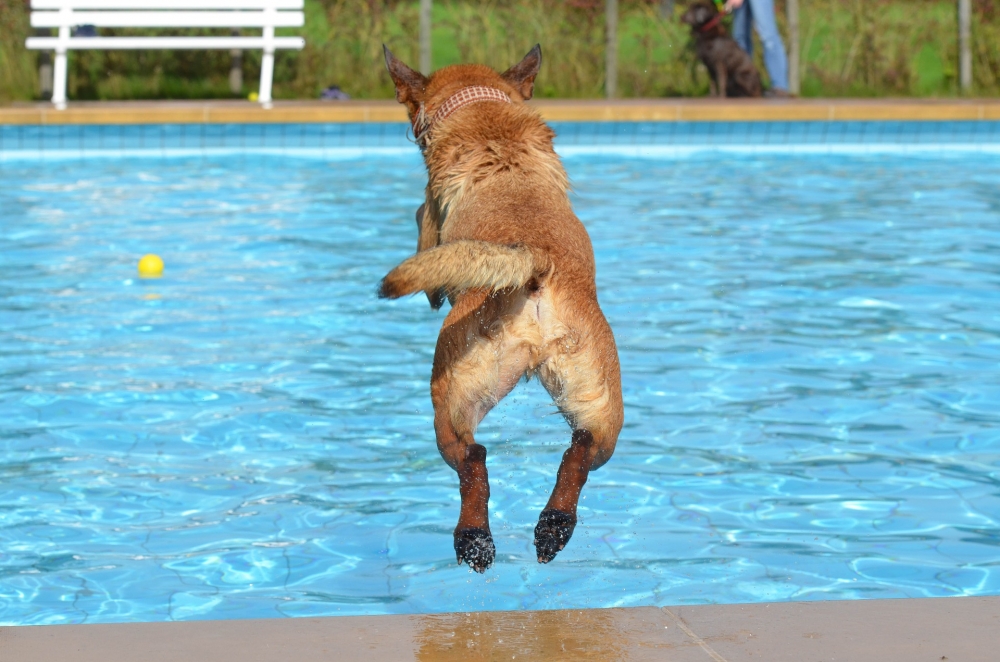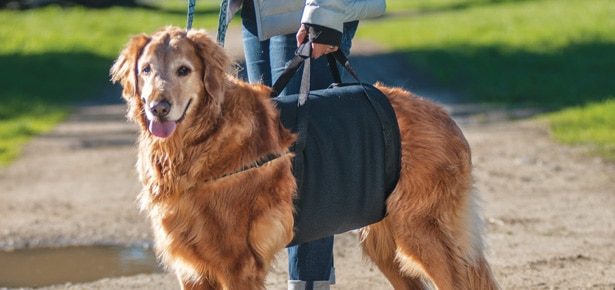

Pool Safety for Dogs
Keep your dog safe with these pool-side safety tips
School is out, the temperatures are high, and the days are long. For children and pets alike, this makes taking a dip in your backyard pool seem more attractive than ever. Although your children may be competent swimmers, do not assume that your pets are. Preventing pool accidents for your pets takes adequate planning and careful supervision.
Limiting their access to the pool is an easy and effective way to prevent accidental fall-ins. “A good gate will be the best way to limit pet access to the pool,” said Dr. James Barr, assistant professor at the Texas A&M College of Veterinary Medicine & Biomedical Sciences. “Keeping the door closed at all times is important for children and dogs alike, as is only allowing them to be in the pool area supervised.”
Contrary to popular belief, not all dogs are efficient swimmers. This common misconception can be life threatening to your pet. “The dogs that are considered to be brachycephalic, such as English bulldogs, American bulldogs, and French bulldogs, are notoriously bad swimmers,” said Barr. Therefore, it is smart to teach these dogs how to swim and exit the pool safely to prevent drowning.
Another popular concern among pet owners is whether it is safe for Fido or Fluffy to drink pool water. Dr. Barr explains that while it typically is not safe, there are some pool waters that are worse than others for drinking. It is also important that your pool’s chemical balance is correct, as algae can be disruptive to pets’ health.
“The typical chlorine pool could be quite irritating to the gastrointestinal tract and could cause some electrolyte issues if enough is drunk,” said Barr. “Saltwater pools, although not as salty as seawater, can also cause electrolyte problems if enough is consumed.”
Though your pooch may be eager to splash into the pool on a hot, summer day, there should be set limitations for dogs of a certain ages or medical conditions. You should always consult with your veterinarian before allowing your dog to swim.
“By far, the most common reason why a dog drowns or nearly drowns in a pool is because they suffer from dementia or are blind or both, fall into the pool and are unable to get out,” said Barr. “Otherwise, safety depends on your dog’s ability to get in and out of the pool.”
While there are many effective ways to ensure your pet’s safety when near a pool, the most important precautionary measure is adequate supervision. Just like with children, leaving them unattended around a pool can lead to unnecessary injury. This, along with teaching Fido how to swim and correctly exit the water, can keep the pool area a fun and safe environment.
Join the newsletter and never miss out on dog content again!
"*" indicates required fields
By clicking the arrow, you agree to our web Terms of Use and Privacy & Cookie Policy. Easy unsubscribe links are provided in every email.






